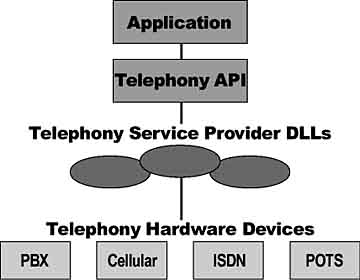Authentication
Telephony is a technology that integrates computers with a telephone network. With telephony, people can use their computers to take advantage of a wide range of sophisticated communications features and services over a telephone line. The Telephony API defines three levels of service: Basic Telephony Services, Supplementary Telephony Services, and Extended Telephony Services. Windows Telephony consists of two main parts : the Windows Telephony Application Programming Interface (TAPI) and Windows Telephony Service Provider Programming Interface (TSPI). This lesson describes the purpose of TAPI and TSPI, and explains the services they provide.
After this lesson, you will be able to:Estimated lesson time 10 minutes
- Explain the purpose of TAPI.
- Explain the purpose of TSPI.
- Describe the services the Microsoft Telephony API provides.
Windows Telephony Architecture
Before you continue with the lesson, run the Chap11.exe animation located on the CD-ROM that accompanies this book. This animation explains how TAPI and TSPI are used to implement telephony support in an application.

In Windows Telephony, an application can call telephony functions to request telephony services. The telephony API accesses the appropriate service provider DLL that communicates with telephony hardware devices such as PBX, Cellular, ISDN, or regular telephone service.

Microsoft Windows Architecture for Developers Training Kit
ISBN: B00007FY9D
EAN: N/A
EAN: N/A
Year: 1998
Pages: 324
Pages: 324
Authors: Microsoft Corporation